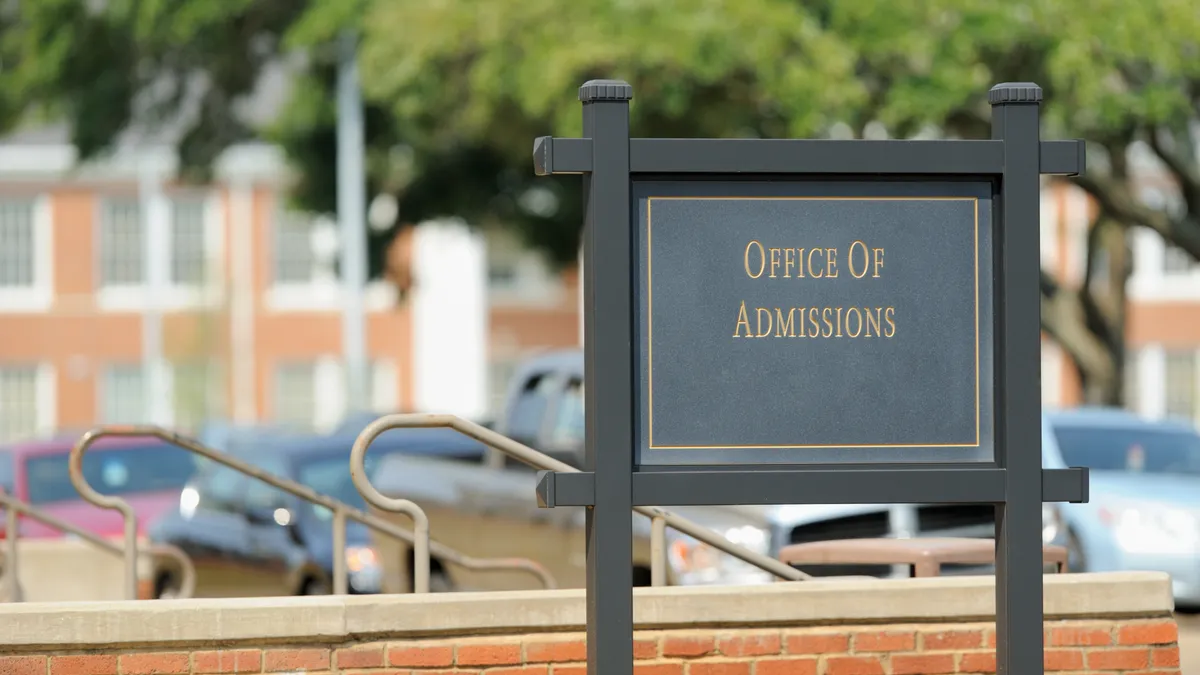Dive Brief:
- Differences in academic preparation during elementary and secondary school partly explain the large racial, gender and socioeconomic disparities in U.S. college enrollment rates, according to new research from the Brookings Institution.
- The researchers found steep divides in college-going rates between students with higher and lower socioeconomic status. Of students in the top quintile for socioeconomic status, 88.9% attended college, compared to just 51.2% of students in the bottom quintile — leaving a nearly 38 percentage point gap.
- However, when researchers compared students with similar levels of academic preparation, the divide between those two socioeconomic groups shrunk to 11 percentage points. They observed even more pronounced effects when examining differences by race and gender.
Dive Insight:
Policymakers often point to college costs and admissions practices for contributing to pervasive divides in enrollment rates across student groups. But the paper’s researchers emphasized that they should also be focusing on disparities in academic preparation during elementary, middle and high school.
To explore the issue, they examined whether 15,000 students who were 9th graders in 2009 attended either a four-year or two-year college within 18 months after their expected high school graduation. The researchers measured their academic preparation through several factors, including students’ GPAs, math test scores and whether they took high-level courses such as Advanced Placement classes.
When controlling for students’ academic preparation, the researchers found that gaps in college-going rates between high and low socioeconomic backgrounds shrunk significantly. In fact, academic preparation accounts for about 70% of the divide, according to their research.
However, some of the divides persisted, especially for students attending four-year colleges. Around three-fourths of high school students in the top socioeconomic quintile, 74%, enrolled in a four-year college shortly after graduation, compared to just 23% of students in the bottom quintile. That represents a whopping 51 percentage point difference.
When controlling for academic preparation, researchers found the divide shrunk to 18 points — 49% of students in the top quintile versus 31% in the bottom.
Researchers noted the remaining gaps are still concerning.
“I think it’s fair to characterize these (socioeconomic status) disparities in four-year college enrollment as enormous,” Sarah Reber, a senior fellow at Brookings and co-author of the report, said during a webinar Monday to discuss the paper’s findings.
Similar divides existed among racial and ethnic groups. Among the sample group, 83% of Asian students attended college, followed by 72% of White students, 63% of Hispanic students and 62% of Black students.
But when controlling for academic preparation, the order reversed — 79% of Black students enrolled in college right after graduation, followed by 76% of Hispanic students, 72% of White students and 71% of Asian students.
The researchers said they didn’t have a large enough sample of American Indian or Alaska Native and Native Hawaiian or Pacific Islander students to include in the analysis.
Accounting for academic preparation completely eliminated gaps between men and women. Overall, researchers found that 73% of female high school students attended college after graduation, compared to 64% of male students. Those shares were the same, 64%, when comparing students with similar levels of academic preparation.
Richard Reeves, a senior fellow at Brookings, cautioned higher education institutions against interpreting the findings to mean that it’s up to others to try to fix college-going gaps among different student groups.
“It’s the job of colleges to be student-ready, as well as the students to be college-ready,” Reeves said during Monday’s event. “That’s just the reality.”






